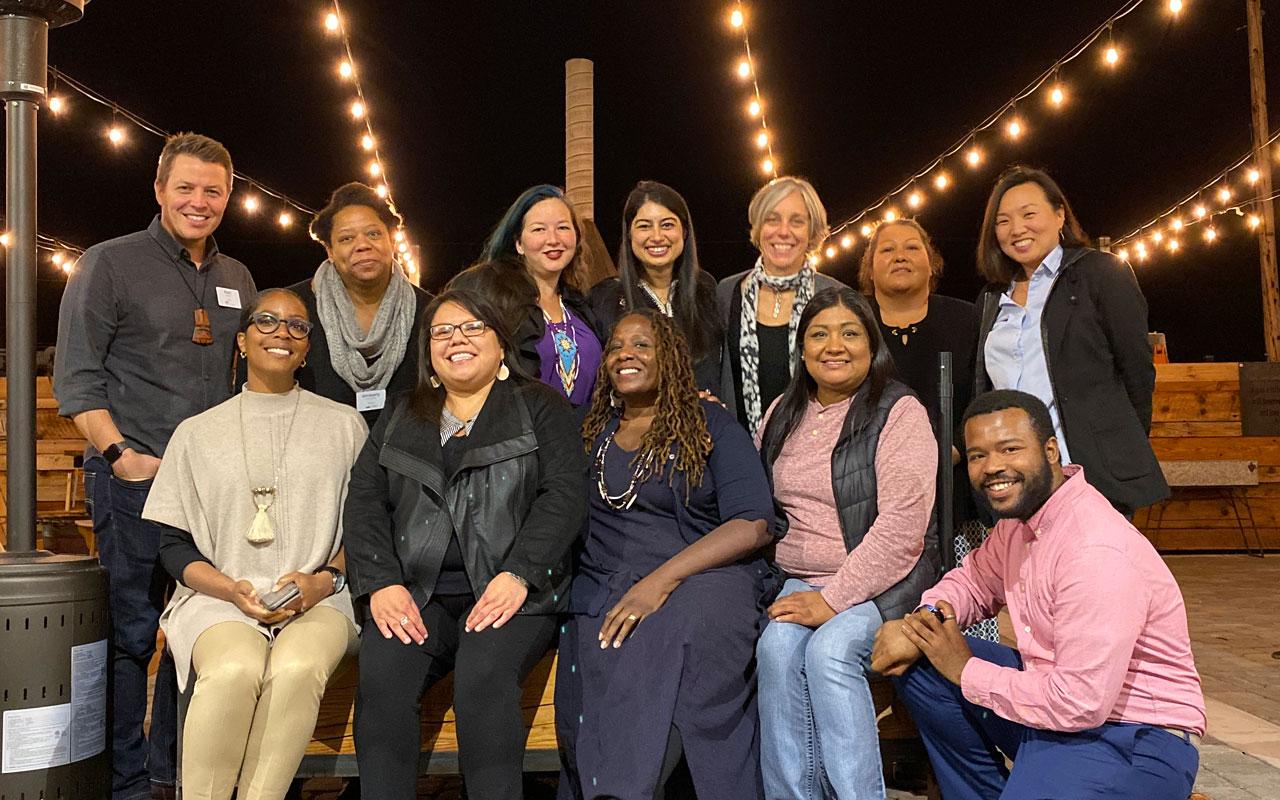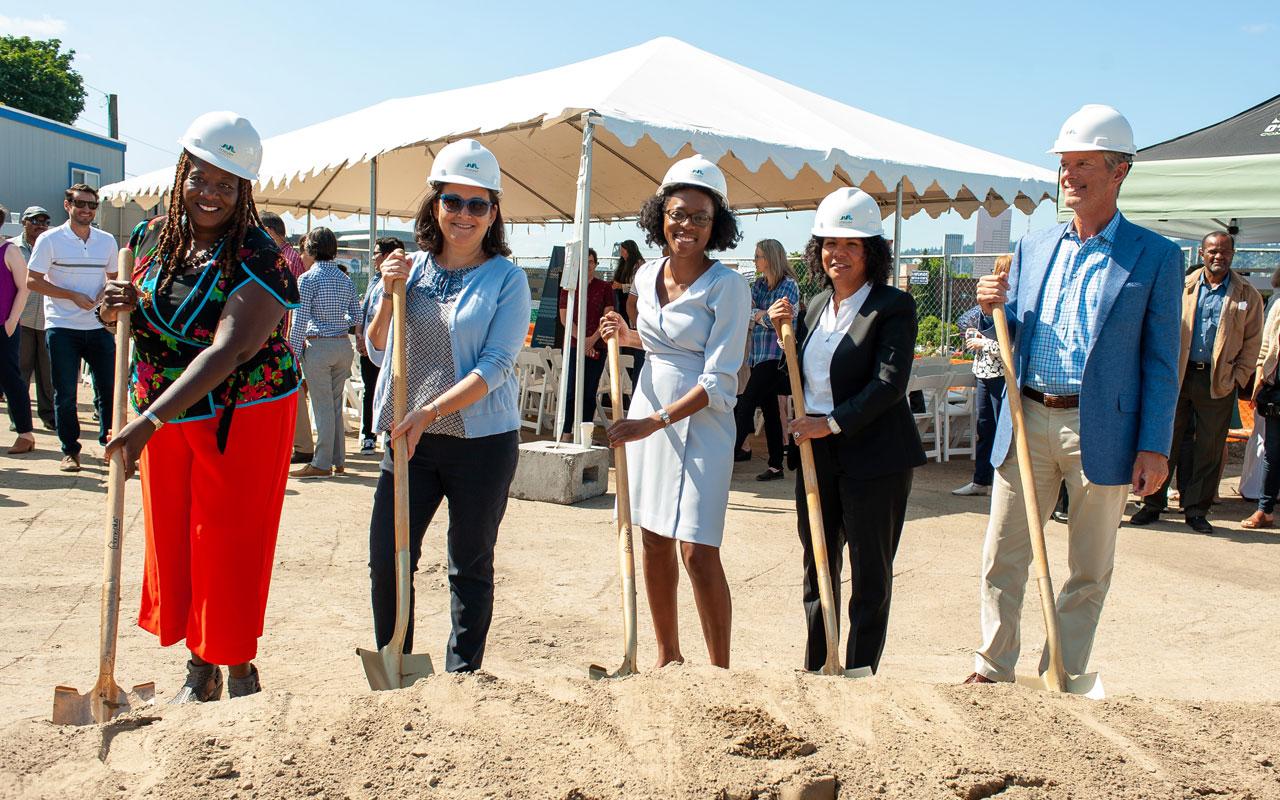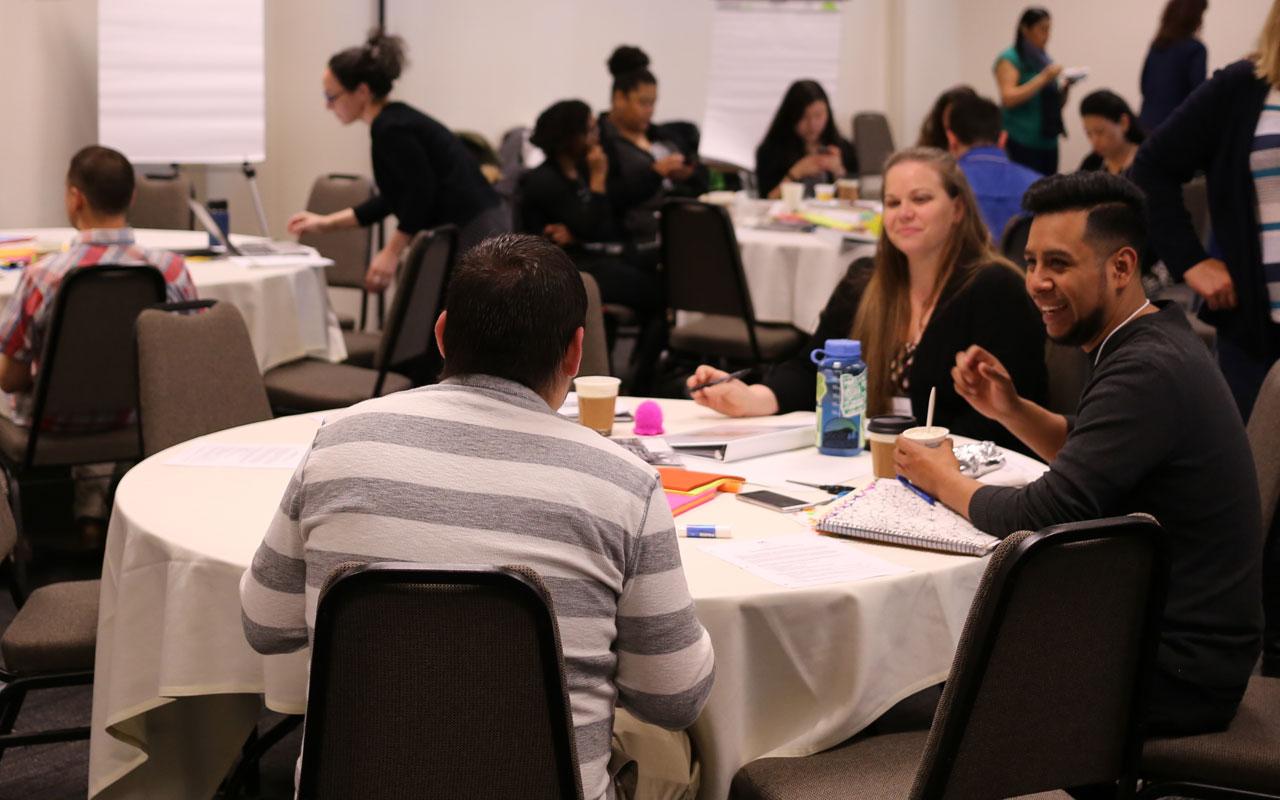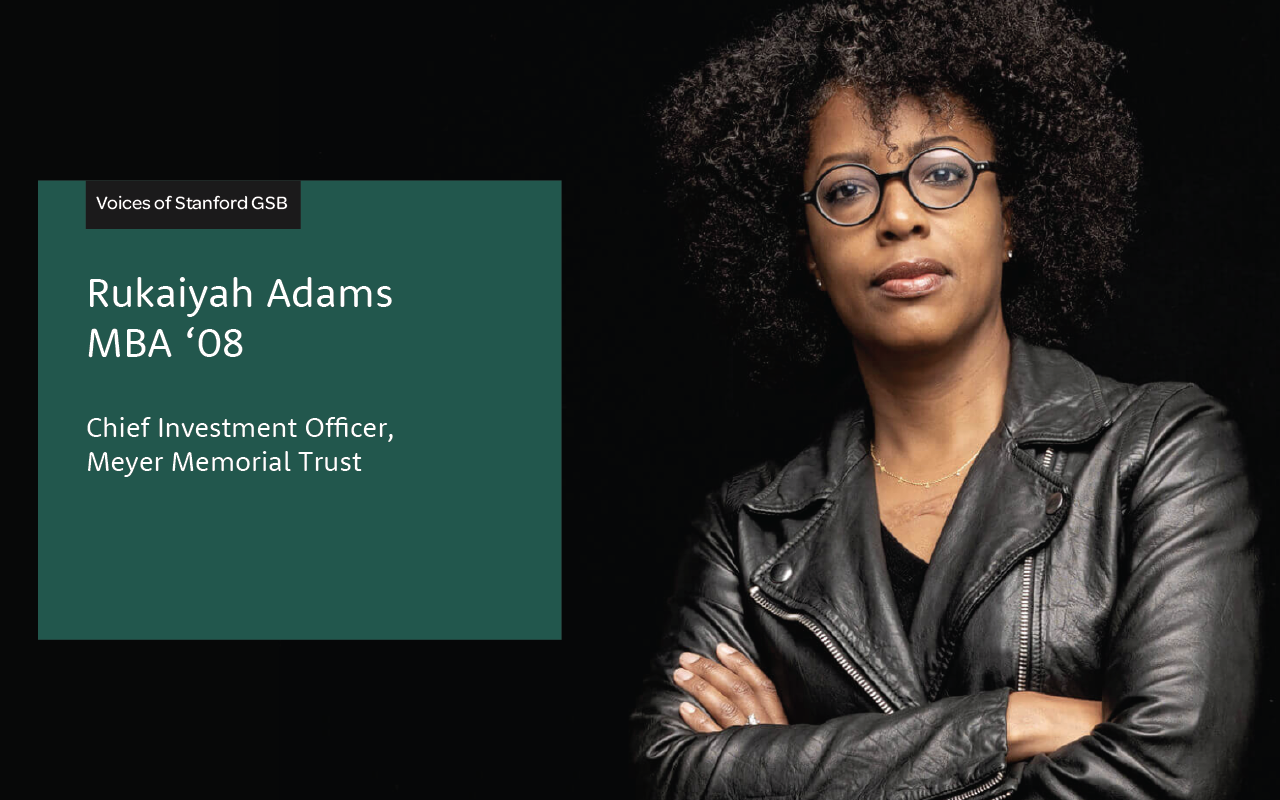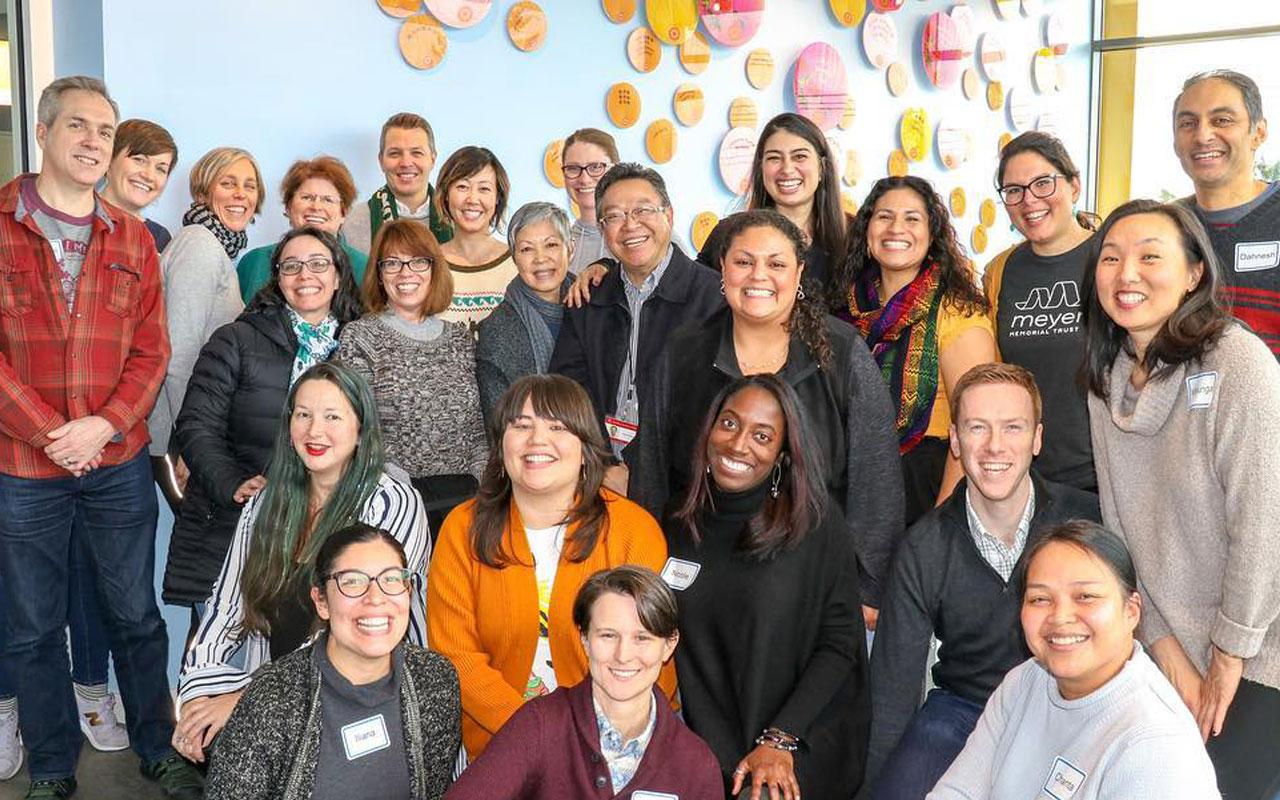Oregon philanthropy is investing in an accurate 2020 U.S. census count
News broadcasts and headlines these days include any number of stories about the 2020 presidential election. But the results of another nationwide civic engagement next year will last beyond the tenure of the next U.S. president, no matter who is elected.
The census.
The U.S. Constitution requires that every ten years the federal government conduct a complete count of all people living in the United States, including immigrants (documented and undocumented), Tribal members and refugees. This is a fundamental, nonpartisan element of our democracy. On census data hinge apportionment of congressional and electoral representation and allocation of more than $800 billion of federal funding each year.
Only a full census count can ensure Oregon receives its fair share of federal funds for schools, housing, highways and more. The 2020 U.S. census will impact all Oregonians for at least a decade. That is why Meyer’s largest grant award this year supports work toward a full, accurate and equitable count. And we are not alone. Oregon philanthropy is marshaling its resources and partnering with public agencies to ensure a full count that will secure resources, information and the representation that Oregonians deserve.
Why the census matters
The results of each decennial census count have a number of direct and tangible impacts.
Representation — Census data determine the number of legislators each state has in the U.S. House of Representatives (apportionment) and are used to set the geographic area that each Representative covers (districting).
Federal funding — Many key safety net programs are funded according to population information, including Head Start, the Supplemental Nutrition Assistance Program, school lunches, Section 8 housing, Pell Grants, short-term rental assistance, medical assistance programs and more. Federal funding allocations vitally impact rural communities, which tend to rely more on federal support.
Resource placement and priority — Census data influence countless decisions, both public and private, about infrastructure needs, investment opportunities, business locations and types of goods and services to be offered.
Beyond resources, the census also helps express who we are in the United States. Data tell stories, and if the census is incomplete or inaccurate, many of our stories about ourselves will (continue to) be as well. For example, until 2000, all census respondents were forced to select a single race; mixed race people were not allowed to identify as such. Likewise, the 2020 census will be the first to count same-sex couples. These identities are invisible — and the people who hold them not fully seen — in federal data from all prior decades, data that is still referred to today and will be indefinitely. Communities that are un- or undercounted also lose visibility, and being left out of the story has very real impacts, social, political, and economic.
What’s at stake in Oregon
According to Census Bureau estimates, Oregon is among a handful of states whose population has grown significantly since the 2010 census and could therefore gain a seat in the U.S. House of Representatives after the 2020 census.A decade ago, Oregon missed adding a sixth seat by a little more than 40,000 people.
Since 2010, Oregon’s population has grown by more than 8%, and we know that demographics have shifted in that time as well. In 2016, Oregon received more than $13 billion through the top 55 federal funding programs, amounting to roughly $3,100 per person. If the count in 2020 fully reflects Oregon’s estimated growth, federal funding allocations to the state will also grow. Oregon will have better data to help lawmakers, businesses and the nonprofit sector make informed decisions on any number of efforts.
What’s different about 2020
Oregon needs a full count. Although no census is perfect, we know that to even achieve status quo accuracy in 2020 will require substantially more than a status quo approach because a number of unique factors this time around could hinder a full count, particularly among Oregon’s hardest-to-count populations:
- This will be the first digital census, raising concerns about personal data security and internet scams. It’ll also reinforce a digital divide in Oregon, where almost 20% of households do not have access to broadband internet.2
- Substantial delays and reductions in federal funding have resulted in a lack of critical infrastructure needed to support the count.3
- Debate over whether to include a citizenship question — which the Supreme Court ultimately blocked in July 2019 — has politicized the census and instilled fear in communities of color and immigrant communities. That fear could still threaten Oregon’s count: Almost a half-million Oregonians live with a noncitizen, and 78% of those living with a noncitizen are people of color.4
- Efforts to spread disinformation — which are expected to intensify — that could suppress census participation, particularly among nonwhite populations.5
- Increasingly polarized public discourse during the run-up to the presidential election.
How Oregon philanthropy is stepping up and centering equity
Given all that is at stake, Meyer and several peer funders began talking in 2017 about the upcoming census in Oregon. Conversations quickly revealed that our diverse group, all with different funding programs and priorities, had common purpose around ensuring a full and accurate census because it impacts every population we focus on in our individual institutions.
We took time to establish shared agreements, among them, an equity lens to help guide our collective work.
“We recognize that structural racism, other oppressions, and geographic isolation have historically suppressed census counts of certain communities and that this continues to have compounding negative impacts on resources and outcomes for those communities. Therefore, we believe that investing first and most in efforts that arise from and focus on communities of color and populations that experience barriers to census and civic participation is the best way to ensure that our work ultimately benefits all Oregonians.”
From there, we — City of Portland Office of Community & Civic Life, Collins Foundation, Ford Family Foundation, Gray Family Foundation, Oregon Community Foundation, North Star Civic Foundation, Northwest Health Foundation, PacificSource Foundation for Health Improvement, Pride Foundation, Spirit Mountain Community Fund, United Way of the Columbia-Willamette and Meyer — formalized our partnership as the Census Equity Funders Committee of Oregon (CEFCO) and engaged in an extensive field scan regarding census work, learning about community and philanthropic efforts in other states, connecting with community groups in Oregon, meeting with U.S. Census Bureau staff, and building partnerships with public agencies, including the Office of Gov. Kate Brown and the City of Portland’s Office of Community and Civic Life.
Our research was clear: The philanthropic community can best support a full and accurate census count by supplementing federal efforts with strategies and resources specifically focused on reaching “Hard to Count” (HTC) populations across Oregon. So CEFCO moved forward with two significant and interrelated pieces of work: investment in the development of a statewide get-out-the count plan to reach HTC communities and creation of a pooled funding mechanism to support work identified in the plan.
“Hard to Count” populations, as designated by the U.S. Census Bureau, are just what they sound like: Groups at risk of not being fully counted. These are both geographic and demographic populations, including people of color, Tribal communities, children under age 5, people experiencing homelessness, geographically isolated households, recent immigrants, people with limited English proficiency, communities with low response rates in the last census, and more.
#WeCountOregon campaign plan
In December 2018, CEFCO released an RFP seeking a contractor to create and implement a statewide plan to ensure that Oregon’s hard to count populations are included in the 2020 census. Dancing Hearts Consulting emerged through a community-informed selection process as the right partner for this work given their organizing and grassroots experience, proposed field approach, and relationships with key community organizations. In fact, the proposed approach and resulting #WeCountOregon campaign plan were collectively developed with — and implementation will be conducted with — the leadership of 12 Partnership Organizations.
This comprehensive get-out-the-count plan includes coordinated strategies for field outreach, communications, Native/Tribal education and engagement, and other culturally specific training and education. The work will touch all 36 counties in Oregon. It is data informed and centers trusted messengers for door-to-door, community-based, and in-agency outreach and communications, which will be available in multiple languages.
Implementation of the #WeCountOregon plan will unfold on this general timeline.
| PREPARE | Develop field operation plans to help increase census participation. | July - December 2019 |
| EDUCATE | Increase community awareness and tackle misinformation about the 2020 census | January - April 1, 2020 |
| ACTIVATE | Engage every Oregonian in the 2020 census (with focus on HTC populations) | April 1* - August 2020 |
| IMPACT | Secure resources and representation for our communities | September 2020 and on |
*April 1 is Census Day, the date by which all households should receive an invitation to participate in the census.
A number of community-based organizations across the state will serve as Census Assistance Centers (selected through a recent RFP) during the most active period of the count, April through July. These are physical locations frequented by members of hard to count populations where resources and assistance related to the census will be available, including on evenings and weekends in most locations. The centers will have computers that community members can use to submit their census forms online, with linguistically appropriate support as needed.
The #WeCountOregon campaign’s focus on reaching hard to count populations is meant to complement broader “complete count” efforts made by the State of Oregon and the federal government. CEFCO collaborates closely with the State, and has members serving on the Oregon Complete Count Committee to ensure that our efforts are coordinated and effective. That committee is co-chaired by Chi Nguyen, Executive Director of APANO, which is one of the #WeCountOregon Partnership Organizations.
Census Equity Fund of Oregon
Fully implementing the #WeCountOregon campaign plan will require an investment of $10 million, which is significant but is only a tiny fraction of the resources that will flow to Oregon based on results of the census count. Because we know that work will move quickly and that funds need to be deployed with maximum efficiency, CEFCO opted to establish a pooled fund: the Census Equity Fund of Oregon. To date, 14 foundations and several public entities have collectively contributed more than $9 million to the fund.
The State of Oregon is the largest contributor at $7.5 million. This is a first-of-its-kind investment from the state, and, along with $600,000 from the City of Portland, makes this the only fund in the country where public and private dollars are commingled and allocated toward a coordinated statewide effort to reach Hard to Count populations. Roughly $1 million has been contributed from philanthropic sources. We are proud to be part of this innovative cross-sector collaboration, and we need more partners to join as well. Fundraising efforts are still underway to make sure that we fully resource the field work needed to achieve a full, equitable count for Oregon.
How everyone can engage to support a full count
Now is the time to get involved, to uphold our democracy and support our communities by ensuring a fair and accurate census in 2020.
Learn — Watch #WeCountOregon’s Census 101 webinar in either English or Spanish and visit sites such as Count Us In and Census 20/20 to find resources and learn more.
Connect — Register your pledge to be counted, and sign up for updates from the #WeCountOregon campaign to keep attuned to census work around the state. Funders, potential funders and partners can also stay engaged by attending monthly Census Equity Fund meetings, which are accessible remotely.
Invest — Contribute to the Census Equity Fund of Oregon. Join this innovative collaboration and help close the gap toward our fundraising goal of $10 million for census engagement in hard to count communities statewide.
Network — Spread the word! Engage your colleagues, peers, and friends in census activity and outreach. Encourage them to pledge to count. Share resources. Help CEFCO connect with potential funders and partners.
To invest or connect with the Census Equity Fund of Oregon, please contact Lauren Gottfredson, Community Collaborations Senior Manager at United Way of the Columbia-Willamette (which is serving as backbone agency for this collective effort). Lauren can be reached at 503-226-9303 or laureng [at] unitedway-pdx.org (laureng[at]unitedway-pdx[dot]org).
Many challenges remain to achieving an accurate census in 2020; this count will require stronger statewide efforts than ever before. Meyer is proud to join with philanthropy peers from across the state in the Census Equity Funders Committee of Oregon (CEFCO) to ensure that each Oregonian is counted.
— Erin
Data sources
-
COUNTING FOR DOLLARS 2020: The Role of the Decennial Census in the Geographic Distribution of Federal Funds. Andrew Reamer, George Washington University. March 2018. ↩
-
Inadequate Funding Imperils a Fair and Accurate 2020 Census ↩
-
Challenge #3: A Citizenship question and Census 2020: Quantifying the Undercount Risk in Oregon ↩
-
VERIFY: Is this survey from Republican National Committee part of the official US Census? ↩


